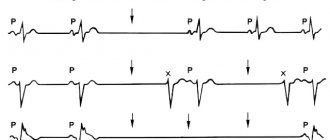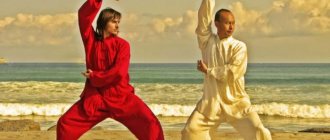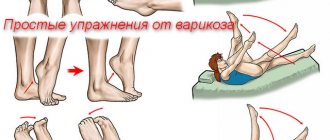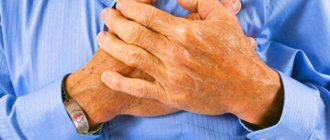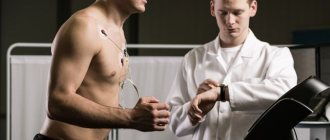Exercise therapy for hypertension is included in the mandatory treatment regimen. Patients with such disorders experience a chronic increase in blood pressure, which affects well-being, the condition of the heart muscle and other organs. Treatment methods differ depending on the stage of hypertension, the patient's age and other factors. In case of serious violations, drug treatment is prescribed, which is necessarily accompanied by general preventive measures, gymnastics and breathing exercises. Taken together, these measures can reduce the tone of blood vessels, normalize blood pressure and reduce the risk of dangerous complications.
Goals and benefits of physical education for hypertension
Physical exercises for hypertension include simple exercises and are prescribed individually. The cause of the disease is not organic pathologies of the myocardium or blood vessels, but various dysregulation of their work. These problems lead to a constant increase in the tone of the vascular walls and an increase in blood pressure resistance. Serious sports are contraindicated for hypertensive patients, as they aggravate the clinical picture and can cause a hypertensive crisis. However, physical therapy is part of a comprehensive treatment regimen. Its goal is to stimulate blood circulation, train the heart muscle and normalize vascular tone.
Exercises are prescribed individually, taking into account the patient’s age, weight and stage of the disease. If done correctly, they have a significant impact on overall well-being. Among the positive effects of training are the following:
- normalization of the patient’s weight – one of the causes of hypertension is excess body weight;
- decreased muscle tone, including those that form the walls of blood vessels, thereby reducing resistance to blood flow;
- acceleration of metabolic processes, improvement of gas exchange in cells and prevention of congestion;
- the emotional component of classes has a positive effect on the nervous processes in the cerebral cortex, as a result of which the regulation of blood circulation improves;
- maintaining the body in normal tone, increasing endurance and performance.
REFERENCE! Atherosclerosis, poor nutrition, excess weight, genetic predisposition - all these factors can trigger the development of hypertension at any age. Regular exercise will significantly improve your health and prevent further progression of the disease.
Gradual steps
If a hypertensive person is just starting to exercise, then you need to be prepared for the fact that the first 3-4 months will only take getting used to the training. It’s better to get involved gradually: exercise 3-4 times a week, but for 30-40 minutes. Be sure to monitor your pulse!
For a hypertensive patient, the initial training pulse is about 100 beats per minute. That is, you need to move quite slowly and carefully. After 4–6 months, you can increase the load and reach 120–130 beats per minute.
Don’t let it seem to you that a heart rate of about 100 beats per minute is only possible with very light training, which will have no effect. According to medical research, it is light training 3-4 times a week for 4 months that helps reduce blood pressure by 10%. Isn't this what we need? In addition, along with blood pressure, excess weight is lost - the cause of hypertension - and tissue sensitivity to insulin increases (prevention of diabetes). So the records will have to wait, but for now, warm up!
Features of training
In case of hypertension, professional sports are contraindicated. High loads accelerate blood flow, thereby increasing tension in the muscles of the heart and vascular walls. Training takes place under the supervision of a doctor with a gradual increase in intensity. In the future, patients can withstand significant loads without harm to health. Classes are also recommended for patients who are on bed rest: they promote a quick return to their normal lifestyle. Depending on the stage of the disease and other factors, training may include the following steps:
- general developmental and strengthening exercises for all muscle groups;
- stretching and relaxation;
- respiratory complexes to improve blood supply and gas exchange in cells.
Some exercises are contraindicated in all patients with hypertension. Such exercises include all types of strength loads, rhythmic gymnastics, lifting to heights (including with your own weight), as well as exercises at uncomfortable temperatures. And you should also take into account your general well-being and give your body proper rest as needed.
Mild hypertension is not a reason to give up active sports and recreation
Literature
- Ananyeva O. V. Hypertension. The best treatment methods. – M.: Vector, 2021. – 128 p.
- Beavers D. J. Blood pressure. Everything you need to know. – M.: AST, 2015. – 444 p.
- Weiner E. Blood pressure. Questions and answers. – M.: Mir, 2021. – 112 p.
- Gainutdinov I.K. Why does your blood pressure rise? – M.: Phoenix, 2021. – 348 p.
- Dobrolyubova U.N. How to reduce blood pressure. – M.: Vector, 2013. – 485 p.
- Ivanova O.A. Heart rate reaction at the stages of training load during physical rehabilitation in cardiac patients // Siberian Medical Journal. – 2012. – No. 6. – P. 33–35.
- Kovalenko M.F. Arterial hypertension. Headache, dizziness, tinnitus. Treatment with naturopathic remedies. – M.: Dilya, 2013. – 224 p.
- Kokosov A.N. Streltsova E.V. Exercise therapy in the rehabilitation of patients with lung and heart diseases - L: Medicine, 1981. - 167 p.
- Lang G. F. Guide to internal medicine. Diseases of the circulatory system. – M.: Medgiz, 1958. – 496 p.
- Maznev N.I. Hypotension. Hypertension. Headache. What to do?. – M.: House. XXI century: Ripol Classic, 2015. – 729 p.
- Neumyvakin I.P. Simple recipes for high and low blood pressure. – M.: Peter, 2021. – 682 p.
- Perry S. What to do if you have high blood pressure: A strategy to fight the invisible enemy - M.: Reader's Digest Publishing House, 2021. - 252 p.
- Shafarostova V.V. 600 questions and answers about hypertension. – M.: World of Books, 2021. – 256 p.
- Shchetinin M.N. Breathing according to Strelnikova conquers diseases. Diseases of the heart and blood vessels. – M.: Book Club 36′6, 2009. – 128 p.
Author: Korolev E. S.
Reviewer: reflexologist Kurus A. N.
Methods and sets of exercises
Your doctor will help you choose a set of exercises. They can be performed at home during the day or as morning exercises. It is recommended to choose a specific time for physical education and stick to it every day - this way the body will not experience stress and will quickly adapt to the new regime. Before class, you should definitely measure your blood pressure: it should not exceed 160/90 mm Hg. Art.
Warm-up complex
It is not recommended to start the main complex without warming up. It consists of simple exercises to warm up muscles and speed up metabolic processes in cells. They are more quickly supplied with oxygen and nutrients, due to which a person’s stamina and performance increase.
- The first exercise is performed in the morning without getting out of bed. You should take a deep breath and at the same time stretch your arms and legs, and as you exhale, relax your muscles. This increases blood flow and stimulates gas exchange in the distal limbs.
- Next, you need to raise your arms and legs, making circular movements with your hands and feet. This is important for warming up the joints, as well as improving muscle elasticity.
- The next step is to warm up your neck muscles. To do this, it is enough to make smooth turns of the head without lifting it from the pillow so that the muscles do not tense. At the same time, blood supply to the brain improves without increasing the load on the vascular walls.
- Then you can slowly take a sitting position and continue the gymnastics. You need to tilt your head, trying to touch your chin to your chest without slouching. Next, you should smoothly tilt it to the sides, bringing your ear as close as possible to your shoulder. This warms up the lateral and back muscles of the neck, which can compress the vessels involved in the blood supply to parts of the brain.
- The last exercise is also performed in a sitting position. All you have to do is take deep breaths, raising your arms, and then completely exhale the air from your lungs, lowering your arms down.
During the day, you can perform a more complex warm-up complex. It is designed for patients who can easily tolerate normal everyday stress and do not need bed rest. It also consists of several exercises that are repeated several times.
- The first exercise is simple walking. For a minute or more, you need to move on your full foot, and then on your toes and heels.
- Starting position - standing on the ground, arms bent at the elbows and located at the waist. Alternately, you need to bend your knees and try to reach your chest. It is important to pay attention to keeping your back straight and your breathing stable.
- The next complex is designed for proper breathing and muscle stretching. As you exhale, your arms rise as high as possible, and one leg moves back and rests on the toe. In this case, you should try to bend your lower back and stretch your back muscles.
- An equally important exercise is body rotation. It is recommended to pick up any object and turn in different directions. In this case, you should leave your pelvis motionless and perform shoulder movements at the expense of your lower back.
- Starting position - standing on the ground, feet parallel to each other, hands located at the waist or you can clasp them in a lock. Next, lunges are performed alternately to the sides. It is important to try to keep your body relaxed, and also to straighten your back and not lean your shoulders forward.
- You need to take a long stick in your hands and place it in front. The legs should be bent at the knees one by one and raised up, trying to touch the stick.
ADVICE! The number of repetitions is selected individually. It is important that the muscles remain as relaxed as possible when performing exercises. Each complex can be repeated at least 3-5 times, and the entire warm-up should take 15 minutes or more.
Exercises for the first stage of hypertension
At the initial stage of the disease, you can pay attention to aerobic exercise. These include all types of active pastime, including walking, running, swimming, cycling and others. If blood pressure readings are relatively stable, there is no need to limit yourself in active recreation - it is enough to pay attention to how you feel when you increase your load.
Morning exercise is especially important: it is better to skip an evening workout than to warm up immediately after waking up
It is important for patients with hypertension to pay attention to sports daily. There are a huge variety of types of physical activity from which you can choose any one. These include:
- various types of walking: sports, Scandinavian, on heels or on toes, with high knees, lunges and others;
- squats and lunges;
- bending and turning the body;
- swing your legs;
- swimming, cycling and others.
The first exercise with which you should start your daily exercise routine is morning walking. The optimal speed, which brings results and affects the movement of blood through the vessels, is 6–6.5 km/h. To begin with, you can walk no more than 3 km, gradually increasing the distance. Running can be started no earlier than in the third week of training. Running reprises should take no more than 1 minute and alternate with walking periods lasting 3-5 minutes. Such loads are maintained for a week, then the duration of the run and the number of reprises are gradually increased. Long-distance races are possible only with proper rest and monitoring of blood pressure.
Exercise for second degree hypertension
Patients with the second stage of hypertension should be careful when performing any exercise. Even walking in this state can cause aggravation and cause a sharp increase in blood pressure. In some cases, bed rest is indicated until relative stabilization of well-being. However, there is a simple complex that is recommended to be done daily in combination with drug treatment and additional therapies. It is performed in a lying position and is aimed at improving blood circulation and stretching muscles.
- Starting position - lying on your back, legs bent at the knees so that the heels are as close to the buttocks as possible. As you inhale, you need to try to tense all the muscles of the body, and as you exhale, relax them.
- The next exercise is performed from a similar position, but now the work of the upper limbs is added. As you inhale, you need to lift them, and as you exhale, stretch them along the body. While inhaling, you should hold your breath.
- Starting position - lying on the bed, legs bent at the knees and resting your full foot on the floor. As you inhale, tense your muscles, and as you exhale, relax completely.
- The legs can then be placed back on the bed. In turn, they are tensed and taken to the side, repeating the exercise for each leg.
- Lying on your back, you need to alternately raise your diagonal arm and leg at the same time. First, the right arm and left leg rise, then vice versa. It is recommended to perform the exercise on a hard surface to reduce the load on the spine.
- The last exercise is circular movements of the leg. It is important that the load falls not on the muscles of the back and arms, but on the legs and buttocks. The limb is lifted while lying on the back and slowly rotated in both directions in turn.
IMPORTANT! Charging for patients with the second stage of hypertension should not take more than 10–20 minutes. It is better to repeat the complex several times during the day.
Breathing exercises
For hypertension, the method of breathing exercises according to Strelnikova’s method is especially effective. It is simple and can be performed at any stage of the disease. Its main goal is to activate blood circulation, including in remote areas, strengthen blood vessels and improve the supply of oxygen to cells and tissues.
- The first exercise is called “Palms”. Bend your arms at the elbow and raise them, placing your palms forward - they should be at shoulder level. Next, take a short breath, clenching your fists, and exhale freely, relaxing your fingers. At first, you can do 24 sets of 4 breathing cycles, then 12 of 8, 6 of 16 and 3 of 32 breaths.
- Another simple exercise is “Epaulettes”. Inhalation should be done quickly and sharply, while your hands are clenched into fists and lowered, and as you exhale you can relax and raise your hands. They are bent, clenched into fists and touching the stomach at the waist, elbows directed outward. The breathing pattern is identical to that used for the first exercise.
- A more complex exercise is “Pump”. First, you need to lean forward a little and inhale noisily through your nose, and then smoothly level up and exhale normally. If you have hypertension, bending over too much when doing this exercise is not recommended.
- The “Cat” breathing complex is also useful for stabilizing blood pressure. In order to inhale, you need to sit down a little, turn your body to the side and bend your arms at the elbow so that your relaxed hands are at waist level. To exhale, return to a standing position.
- The last exercise is called the Shoulder Hug. Starting position - standing, elbows bent, raised and at shoulder level, hands clenched into fists, but not tense. To inhale, the hands move towards each other, one passes over the other so that the fists almost touch the opposite shoulder. To exhale, you should return to the starting position.
Proper breathing is a way to strengthen blood vessels, improve blood circulation and establish metabolic processes at the cellular level
It is believed that Strelnikova’s breathing exercises are so effective that they can relieve hypertension even without additional medications. However, the treatment regimen must be selected by the attending physician. You may need a complex technique that will include breathing exercises, medications, gymnastics, and other methods of reducing pressure.
Physical therapy to lower blood pressure using the Shishonin method
Dr. Shishonin’s exercises for hypertension will help you get rid of high blood pressure, headaches, migraines, sleep problems and other unpleasant manifestations of the disease through the effect on the cervical spine.
Here are the following exercises to reduce blood pressure:
- Metronome. Sit on a chair, tilt your head left and right, holding each side for 30 seconds.
- Spring. Tilt your head as far down as possible so that your chin touches your chest. Freeze for 30 seconds. Then stretch your neck forward and freeze again. Move your head to the side, and again do not move for 30 seconds. Go back to the beginning. Perform 4-5 turns on each side.
- Fakir. Place your palms behind your neck. Bend your elbows as tight as you can. Turn your head from left to right, freezing in each direction for half a minute.
- Heron. IP - sitting. Place your palms on your knees. Stretch your chin up while looking at the ceiling. At the same time, move your arms back. Hold for 5 seconds. Bring your chin down and your arms forward. Rest and do it all again.
- Goose. IP - standing. Position your head so that your chin is parallel to the floor. Pull your neck forward until you feel pain. Stop for 2-3 seconds and return to the starting position. Rest and repeat everything from the beginning again.
These 5 exercises for hypertension will normalize blood pressure, relieve headaches, and help increase strength and energy. Dr. Shishonin recommends performing neck exercises for hypertension efficiently and slowly, so as not to provoke an exacerbation of hypertension.
Video: Dr. Shishonin's exercises
Contraindications and precautions
Gymnastics for hypertension is useful for all patients, but it is important to take into account the stage of the disease and overall well-being. Before and after training, it is recommended to measure your blood pressure with a tonometer. And there are also a number of contraindications in which sports should be postponed for a while or abandoned completely:
- blood pressure 180/110 mm Hg. Art. and more;
- varicose veins, thrombosis, inflammatory processes in the vascular walls;
- renal or heart failure;
- severe arrhythmia;
- history of angina attacks.
Therapeutic exercises for hypertension is a simple way to improve the patient’s well-being and prevent further development of the pathology. Charging begins with a warm-up, which can be performed in a lying or standing position. Then complexes are performed for stretching and strengthening muscles, restoring blood circulation, and general toning of the body. And breathing exercises are also useful. All these techniques will not replace full-fledged drug treatment, but can be an excellent method of supplementing it.
Additional recommendations
Exercise therapy for hypertension is only one of the components of complex therapy for this disease. You need to understand that a persistent increase in pressure is caused, first of all, by a decrease in vascular tone, so this measure is necessary. And reducing blood pressure with pills means fighting your own body. It is very important to support the organs of the cardiovascular system not only with physical activity (exercise for hypertension), but also with nutrients. The natural cardioprotector Cardioton will help with this .
The flavonoids quercetin and vitexin, which are rich in one of the components of this drug - rose hips, cope well with the problem of vascular weakness. These unique natural compounds help to “invigorate” blood vessels, stimulating their contractile function. This improves blood flow, relieving the body of the need to urgently increase blood pressure.
Another valuable flavonoid, hyperoside, contained in hawthorn fruits, improves the transport of oxygen to heart tissue, helping to prevent ischemia and angina. And the “fiery engine” itself, from such vitamin support, will work like the engine of an expensive sports car, filled with high-quality fuel. At the same time, acetylcholine (another component of hawthorn) will help protect the heart from overload and wear. For those who want to train without regard to their pulse, this property is truly priceless.
It is important to note that all of the listed substances in Cardioton are preserved thanks to cold processing technology. Which, by the way, neither extracts nor the notorious tinctures of the same hawthorn can boast of.
The third key component of the drug is royal jelly - a natural complex of vitamins, minerals, Omega-3 unsaturated fatty acids and a host of other substances, without which the harmonious functioning of the cardiovascular system is simply unthinkable. The combined effect of these nutrients helps reduce the amount of cholesterol in the blood, protect the heart muscle from oxidative stress, saturate myocardial tissue with oxygen and, as a result, naturally reduce blood pressure.
With Cardioton , your gymnastics for hypertension will become truly healthy!
You can purchase this product in pharmacies and specialty stores.
Cardio loads
For hypertension, you need not only to do exercises, breathing exercises and gymnastics, but also to give aerobic exercise to the heart and blood vessels.
You need to do measured walking every day. This is best done with Nordic walking poles.
They intensify and distribute the load on all parts of the body, and also help to maintain balance and not fall in case of accidental stumbling or dizziness.
When buying walking poles, immediately buy a heart rate monitor (fitness bracelet)
Instructions for changing the load during dosed walking for stage I-II hypertension:
- 1st month – normal walking speed, duration 20-30 minutes;
- 2nd month – distance 5 km, at first you can take pauses for rest;
- 3-5 months - a gradual increase in distance to 10 km, and the speed of movement from 3-4 km/h needs to be increased to 6 km/h.
In any case, the pulse while walking should not go beyond the values that need to be calculated using the formula shown in the photo above. If the heart rate is lower, then there will be no therapeutic effects, and the price for training with a too high heart rate is a surge in pressure and a hypertensive crisis.
On a note. The best cardio exercise for hypertensive patients is considered to be exercise in a swimming pool - water aerobics and/or dosed swimming.
Elderly people who are at risk of accidentally falling, even when walking with Nordic poles, can get a load on the cardiovascular system on a bicycle or rowing machine.


